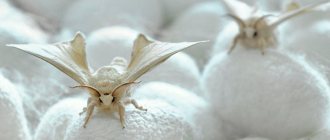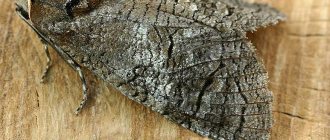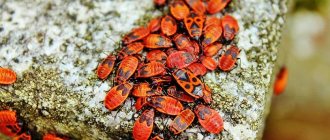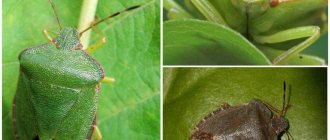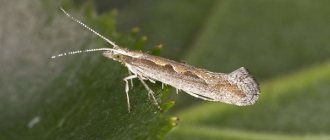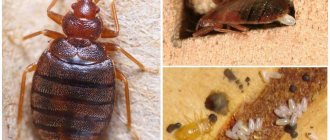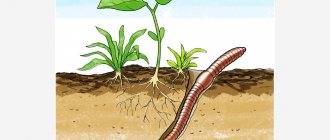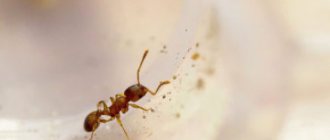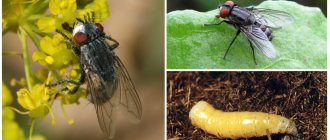Soldier bug (Pyrrhocoris apterus), also called the red bug or cossack, is a terrestrial invertebrate from the family Red bug and the order Hemiptera.
It reaches 11 mm in length and has a variegated color: black back and elytral plates with a complex red, less often orange, pattern. There are many varieties of patterns; scientists associate the type of pattern on the back with the ecological situation of the area where it was located as a larva.
Kozachek has large, complex, black eyes, a piercing-sucking type of mouthparts, and a proboscis, normally hidden under the body, capable of piercing the chitinous cover of invertebrates. The wingless red bug has a gland in its chest that secretes a strong-smelling secretion and walking-type legs. Their black antennae consist of four segments.
Habitat
This species has a very wide habitat. It can be found throughout the territory, from the Arctic Circle to tropical forests. It inhabits all of temperate Eurasia and northern Africa, and it has also been introduced to North America. In Russia it is present throughout the territory.
What does it eat?
Red bugs and their larvae consume cell sap, using their proboscis to pierce the hard shell of the leaf and gain access to the nutritious sap, without disdaining any plant growing in the garden. It also comes with the seeds and fruits of some trees and shrubs. In rare cases, the wingless red bug can feast on the corpses of small invertebrates and even resort to cannibalism.
Signs of appearance
The appearance of a red soldier in your garden can be signaled by such phenomena as:
- drying of leaves of umbrella crops;
- the appearance of yellow spots on cabbage leaves;
- falling of buds and flowers;
- curling and drying of root crop tops;
- developmental lag of young seedlings;
- drying of berries.
The easiest way to find signs of damage is in crops such as cabbage (you should pay attention to large yellow spots on the leaves), coriander or dill (they begin to dry out quickly, since these varieties belong to the umbrella family), carrots and beets are inhibited in their development, leaf blades become deformed and wither.
Severely affected crops that cannot be saved must be removed and destroyed. They may contain larvae, which may soon infect surrounding crops.
Thanks to the color of bedbugs, they are easy to spot with the naked eye when they crawl out to bask in the sun. This is their common habit.
Reproduction
The breeding period of soldier bugs does not take much time. The mating process occurs in a rather strange way. Two Cossacks cling together with the back of their body and move without disengaging for some time. After this, the female places them inside the plants that she feeds on at this time. One oviposition consists of 20-30 small yellowish eggs and can be located in any above-ground part of the plant.
Larvae
The larvae emerge from the eggs 10-12 days after the eggs are laid; they are small in size and uniformly colored red. They, like adults, use cell sap for nutrition. They often drink the sap of birch, legumes and young shoots, both cultivated varieties and weeds.
The larvae are clearly visible in the spring on the birch bark, where they crawl out to bask in the sun's rays.
Lifestyle
The red bug is one of the first insects to emerge after hibernation. This is a terrestrial representative of the family. From March, as soon as the snow melts, red and black clusters of bugs are clearly visible at the base of linden trees. Due to the absence of natural enemies, they lead an open lifestyle. Insects are active until September-October, leaving for the winter with the onset of the first frost.
The bright color of their integument has a certain biological meaning. The color type of the wingless red bug is warning. It warns predators about the unpleasant taste and smell of the carrier. Birds and predatory insects do not consider toy soldiers as prey. Warning coloring has a particularly strong effect in case of mass accumulations of bedbugs.
Information. The fertility of females and the lifespan of bedbugs depends on living conditions. Temperature plays a major role.
The habitat of the wingless red bug is deciduous forests, parks, clearings, and clearings. In rural areas, insects settle in garden plots. Next to humans, they have everything they need for life - food and shelter. Soldier bugs live in colonies; in summer their numbers are small, but before winter they number in the tens of thousands. They hide from frost under the bark of trees, piles of leaves, and in the cracks of stumps.
Nutrition
The type of feeding is mixed, insects suck the juice from plants, seeds, and fallen fruits. Adults and larvae feed together on organic remains and corpses of invertebrates. The diet often includes dead insects - grasshopper larvae, aphids, beetles, wasps. Bedbugs find suitable food on the ground or climb onto plants. They pose no danger to people. Unlike bedbugs, toy soldiers do not drink the blood of people or animals.
Reproduction
The soldier bug is an insect with incomplete metamorphosis; there is no pupal phase in its life cycle. In the spring, the toy soldiers begin their mating season. In each colony there are 2-3 times more males than females. The partners are held together by their abdomens and in a clutch, moving with their backs to each other for several hours or days.
Information. The long time of copulation (12 hours to 7 days) is a mechanism for protecting the male’s ejaculate in conditions of high competition.
The fertilized female lays eggs in the ground or under a layer of dead plants. Successful places are depressions in the soil, where masonry has a greater chance of remaining unnoticed. Soldier eggs are white, transparent, oval in shape. They are deposited in groups of 20-30 pieces. Embryonic development takes 7-10 days, at temperatures below 18° - 24 days. At the end of the period, the eggs turn yellow-red.
Information. At low air temperatures, the size of eggs decreases. Small larvae emerge from them, which run the risk of becoming prey to larger relatives. Cases of cannibalism are common among soldier bugs.
Hatched nymphs are light orange with transparent limbs. Having left the egg shell, they immediately begin to explore the surroundings in search of food. Soon the covers of the larvae darken, the antennae and legs become brown. The body becomes orange-red. After two or three molts, a black spot and several dots appear on the elytra. The young have long antennae and a thin proboscis. They darken simultaneously with the appearance of a pattern on the pronotum and elytra.
First instar larva
The larvae go through 5 instars. They take 17-24 days to mature. When the temperature drops to 14-15°, the nymphs stop feeding and their development stops. Externally, the offspring are similar to the imago, but the larvae lack elytra. In the northern regions, one generation changes per year, in the southern regions - two. Nymphs that emerge in May become sexually mature by June, mate and lay eggs. In autumn, adults of the second generation leave for the winter.
Harm or benefit of a bug
Despite the fact that until recently the soldier bug was considered harmless to gardens, today science has proven that it is a common pest that brings many problems to farmers and gardeners, eating their gardens and killing young shoots.
After their appearance, the leaves become bent, the shoots do not grow, adult plants become covered with spots and may even die if a large colony has settled in the garden. Due to damage to green cells, photosynthetic capacity decreases, which means the amount of absorbed substances decreases and the yield decreases. Cossacks can do especially a lot of harm to vineyards, where they are most often found.
Kozachek can feed on both stems and fruits of grapes, causing enormous damage to the vineyard. Fortunately, we can say with confidence that this insect is completely harmless to the health of humans and animals, because it does not settle in houses, it can bite a person only in extreme cases, it does not carry any dangerous diseases, bites do not cause allergic reactions, so you should be afraid of the Cossack not worth it.
Why is the soldier bug harmful?
Soldier bugs are far from harmless animals, as is commonly believed. They feed not only on seeds and remains of dead insects. Pests suck the juice from young shoots, leaves, and fruits, causing great damage to garden crops.
Damage caused by firebugs:
- they like to suck the juice from grape fruits, as a result, the yield of the bushes is significantly reduced. Damaged berries become unsuitable for food;
- The insect's proboscis is quite powerful, so it can pierce hard seeds and thick shoots. The plant from which bugs suck out beneficial juices gradually stops blooming, bearing fruit and dies;
- affects tree trunks and branches;
- damages cabbage and beet leaves, leaving small punctures on them;
- destroy seeds sown in the soil;
- are dangerous pests for emerging seedlings. The bugs suck out the nutritious juice, causing the sprouts to dry out.
Fire bugs cause harm when there are a lot of them
A large colony of insects can cause significant damage to summer cottages, farms and vineyards.
What is it often confused with?
The soldier bug is often confused with the firefighter beetle, although they are not very similar to each other.
The fire beetle (Cantharis rustica) is a species of soft-bodied beetle found throughout southern Russia.
This beetle is one and a half to two times longer than the soldier and has a different color (brown elytra and an orange abdomen), they are useful for humans, because they feed on eggs and young insects, thus exterminating many pests. These beetles fly beautifully and also lay eggs in rotten wood. In fact, the soldier is not a beetle at all, since beetles belong to the order Coleoptera, and he belongs to the order Hemiptera.
Why are these insects so often confused? It's very simple, people confuse the soldier bug with the fireman beetle because of the fiery red color of its wing covers.
Is your garden or balcony infested with firebugs?
Many gardeners may wonder if their plants are at risk and can they remove this infestation?
Red bug larvae prefer to live under the bark of dead trees, where they feed on worms. Sometimes they feed on the larvae of other beetle species, such as bark beetles. In rare cases, when food is insufficient, the larvae are prone to cannibalism.
Adult animals feed on nectar, pollen or honeydew. Development from larva to adult bedbug takes about two to three years. Pupation occurs in the cradle between the tree and the bark.
Red bugs contain cantharidin, a benzofuran compound. The natural product is created when animals eat other insects, and some species are used for mating females. Cantharidin is very irritating to human skin and mucous membranes, so be careful.
As mentioned, soldier bug larvae also feed on pests such as bark beetle larvae. Thus, they can be considered useful. Even adult beetles do not harm plants, since they feed mainly on dew. Fears that soldier bugs are pests are unfounded, even in mass cases. If you find animals on your plants in the garden, you have nothing to worry about.
Habitats
They take food in liquid form through their proboscis. To consume food, its proboscis bores a hole in the shell of fallen seeds or fruits, leaving a disintegrating secretion, and then absorbs the resulting nutrient-rich juice.
Soldier bugs prefer linden and mallow. In general, they are not considered hazardous to plant health. However, in the case of a particularly high concentration of beetles on one plant, it may happen that damage to flower buds or leaf buds occurs. But this is an extremely rare case.
Life cycle
Once temperatures rise in the spring, thousands of firebugs will crawl out of winter quarters in mid-March and bask in the first rays of sun on rocks, house walls or tree trunks. This, as stated above, increases their metabolism and prepares them for the upcoming breeding in April and May.
Copulation can take from several hours to several days. A female soldier bug mates with several males. Males try to prolong the duration of copulation as long as possible so that no competitor can then mate with the same female. This is why you can often observe how two fire beetles seem to hang endlessly over each other, or two beetles seem to be stuck together with their back parts.
A 30-hour sexual encounter begins, during which the female lays up to one hundred eggs in various locations and simply carries her partner on her back. To do this, the female looks for protected places, for example, under stones or a layer of leaves. After hatching in May, the nymphs go through six different juvenile stages with different colors until they finally reach the emergence of the soldier beetle. Only one generation of fire beetles is born each year.
Fighting methods
So, after you have found one or more signs of the appearance of this insect in your garden, you need to make sure that it is a soldier bug by finding one or more representatives in your area. This is very easy to do thanks to their color. After this, it is worth starting to destroy the pest.
Traditional methods
There is no point in immediately starting heavy artillery using pesticides. It’s better to start with softer traditional methods that are less likely to damage your agrocenosis.
The simplest and most commonly used:
Onion decoction (250 grams per bucket of water, the norm per square meter of soil infested with the pest), wood ash (200 grams per bucket), mustard powder (100 grams per bucket) and laundry soap (1 piece).
This solution should be sprayed on areas with infected plants 1-2 times a week .
Another effective way to combat this pest can be to plant some types of plants on the site, for example black cohosh (commonly called black cohosh).
REFERENCE! This plant effectively repels most types of bedbugs and some other pests; moreover, this species is very beautiful and can serve a decorative function.
Another effective way to exterminate bedbugs is to install a catching belt . A sticky strip wraps around the base of the tree trunk, where the soldier bug is most often found.
Products and chemicals
If folk methods did not help you get rid of the uninvited guest, then it’s time to move on to stronger means. One of the most harmless products for your garden is the drug “Bankol” . It can be purchased at any garden supply store. It will help get rid of adults and larvae, as well as many other types of phyto pests.
ATTENTION! Any chemical is harmful to humans, so you need to strictly follow the instructions, observe the processing time, and after using the drug, do not allow children and pets to the treated areas, do not be there yourself, and use protection during processing (gloves, a raincoat and a respirator). This drug should be used to spot treat infected areas of crops.
You can also use more serious insecticides, such as Karbofos and Aktara.
Natural enemies
The soldier bug has a gland on its back that produces an unpleasant-smelling secretion, a warning color and a bitter taste; therefore, it is not the most attractive delicacy, so a bird can only eat a bug very rarely.
This representative of hemipterans is quite large, so it also has no enemies among insects, except that ants may not disdain a dead bug. However, interspecific cannibalism occurs in the order Hemiptera, especially during the wintering period. Therefore, we can say that the natural enemies of soldier bugs are themselves and humans.
How to get rid of a pest
It is more advisable to start fighting the soldier bug in early spring, when the lack of dense vegetation allows you to more effectively treat the garden plot. By influencing the first generation of beetles, the potential number of subsequent generations can be significantly reduced.
Valuable garden crops must be planted away from weeds, which are the pest’s favorite wintering place. It is recommended to periodically mow the perennial weeds around the garden plot to the roots; this manipulation will destroy the eggs laid in the stems. If the plant is infected with red bug larvae, it should be sprayed with the specialized product “Bankol”. The insecticide works equally well against both adult beetles and its larvae. The drug is completely safe for humans, animals and beneficial insects.
Along with chemicals, you can also use a folk remedy to repel the pest: plant a black cohosh plant around the perimeter of the land, the smell of which insects cannot tolerate.
Black cohosh photo
There are other ways to destroy the soldier bug, here are some of them:
- Regular abundant watering of the area will be effective against the larvae; they will simply drown;
- A soap solution at the rate of 250 grams of soap per 5 liters of water will get rid of not only toy soldiers, but also other unwanted garden parasites;
- Mechanical destruction, beetles collected on the site are crushed;
- Use of Natural Enemies
Prevention
The invasion of these pests can be easily avoided. You just need to prepare the site in advance and follow a few simple rules. Firstly, it is very important to remove weeds in a timely manner and trim the lawn at least once a month; it is advisable to burn all cut and torn grass in order to avoid the spread of the bug, if there are already ovipositors in the grass.
Secondly, it is necessary to uproot old stumps, because this is where the Cossack often settles. You also need to install a fishing belt at the base of the trees in advance. It is necessary to plant legumes separately from other crops, as they often become the starting point of infection, since they are a refuge for Cossacks during the harsh winter months. It is also worth treating the wintering areas of these insects annually with an insecticide (you can use dichlorvos).
Preventive measures
The following preventive measures will help prevent the appearance of soldier bugs on the site:
- planting plants on the site that repel insects (black cohosh, mustard, wormwood);
- timely weeding and destruction (preferably burning) of weeds, mowing the lawn;
- regular cleaning of the area from plant debris;
- uprooting old stumps;
- removing dried bark from trees;
- correct planting (avoid close proximity of legumes to fruits, berries and vegetables).
It is also advisable to treat the area with insecticidal preparations in the fall after harvesting.
